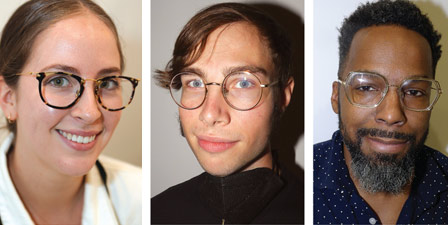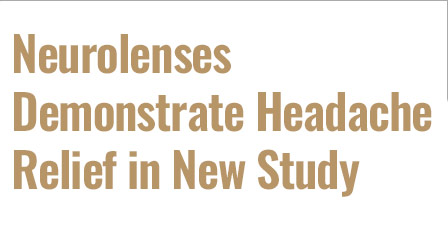To many ophthalmologists, the mention of the term neuroprotection in relation to glaucoma evokes a skeptical response. Given the difficulties inherent in proving the concept that a pharmaceutical agent can restore or protect cells and impact the progression of glaucoma—in particular, measuring the purportedly neuroprotective effect—skepticism is still warranted.
Recent developments offer hope, however, that research may yet find a way to offer glaucoma patients another option beyond lowering intraocular pressure, and a new treatment in the battle against the blinding disease. In this article, I’ll describe some of the reasons for this renewed optimism.
Focus on IOP
In recent years, breakthrough findings of major clinical studies, such as the Ocular Hypertension Treatment Study, the Early Manifest Glaucoma Trial, and the Advanced Glaucoma Intervention Study, have focused the glaucoma community’s interest intently on the benefits of IOP reduction. These clinical studies have demonstrated that lowering IOP also has a definite “neuroprotective effect” on retinal ganglion cell survival and can delay the onset or progression of glaucoma (as confirmed by visual field assessment). Even with seemingly adequate IOP lowering, some patients in these trials continued to demonstrate disease progression based on worsened visual field scores and/or progressive optic nerve head cupping.
For these reasons, researchers have continued to seek other means of neuroprotection independent of IOP reduction.
An abstract presented at this year’s Association for Research in Vision and Ophthalmology meeting has provided some renewed interest in this topic.
Italian physician Stefano Gandolfi, MD, and colleagues presented some intriguing data on a pilot study in human subjects with progressive open-angle glaucoma who were randomized to additive therapy with either brimonidine 0.2% or argon laser trabeculoplasty (ALT). This study sought to determine whether the brimonidine, an alpha-2 agonist, offered a non-IOP-related effect on visual field progression in glaucoma. (Gandolfi SA, et al. Invest Ophthalmol Vis Sci. 2004;45:ARVO E-Abstract 2298).
In the study, involving Dr. Gandolfi’s University of Parma and the glaucoma group at Moorfields Eye Hospital, London, investigators prospectively randomized 52 eyes to additive therapy, 27 to brimonidine and 25 to ALT. All subjects showed confirmed progression of visual field defects (24/2 Humphrey, full threshold), IOP <19 mmHg on two medications, confirmed open angle, definite glaucomatous optic neuropathy (based on the Heidelberg Retinal Tomograph and the Moorfields regression analysis), clear lenses, best corrected visual acuity < 0.2 LogMAR, refraction within – 5/+2 D, no evidence of age-related macular degeneration or diabetic retinopathy, and negative history for neurological diseases.
After 18 months with their initial therapy, patients were randomized to further treatment (brimonidine 0.2% b.i.d. or one session of ALT, 360 degrees, either one added to the pre-existing therapy). In the case of < 10-percent IOP drop, the eye was crossed over to the other treatment. The main outcome measure was change in the mean slope of field loss (dB/year, using the Progressor software) between the first and second phases of the study. Fifty eyes qualified for follow up, and 41 eyes (22 brimonidine, 19 ALT) completed follow-up.
The researchers reported a significant beneficial effect of brimonidine on the mean slope of field loss, with field progression much slower in the brimonidine-treated group than in the ALT group. Despite less effective additional IOP control, brimonidine appeared to be more effective than ALT therapy in reducing visual field deterioration in patients with worsening glaucoma.
Though the data of this study has yet to be published (and thus has not gone through the scientific peer-review process), the excitement that the preliminary results generated is substantial. One of the elusive goals of neuroprotection research has been proving the concept in human clinical studies without the confounding benefit of IOP-lowering. In this prospective study, the patients who were randomized to ALT actually achieved lower pressures, but they appeared to have poorer visual field outcomes when compared to subjects in the brimonidine group.
Another cautionary note is that the patients in this pilot study were a very distinct group of patients with a rapid course of glaucomatous visual field progression. It may be difficult to recruit a significant number of these patients in future studies since some of them may be offered glaucoma filtration surgery as an alternative. Appropriate and ethical enrollment of glaucoma patients who would benefit from neuroprotection medications (and in sufficient numbers) will be an on-going challenge of conducting research in the field of neuroprotection. The generalizability of the study also has to be considered. What percentage of patients will benefit eventually from neuroprotective medications? What type of glaucomas would benefit from neuroprotection? At which stage of the disease will the medications need to be initiated? In time, studies will help answer these questions.
What about Memantine?
Allergan has devoted years of effort and funding to studying the neuroprotective potential of memantine, an N-methyl-D-aspartate (NMDA) receptor antagonist. Apoptosis, or programmed cell death, occurs in several other central nervous system diseases such as Alzheimer’s and Parkinson’s. In the setting of glaucoma, apoptosis leads to death of retinal ganglion cells and is thought to result from the excitotoxic activity of glutamate, which activates NDMA receptors. Memantine acts by limiting the harmful action of NDMA receptors, while allowing activities that contribute to normal cell processes. Memantine, which does not lower IOP, has already won approval in Europe and the United States to treat Alzheimer’s and has shown promise in animal models of glaucoma.
Human trials of memantine continue in Europe, and two animal studies in the United States, both by Allergan, were reported in the August issue of Investigative Ophthalmology and Visual Science. In one, the researchers used an argon laser to induce chronic ocular hypertension in the right eyes of 18 macaque monkeys. Nine animals were dosed daily with 4 mg/kg memantine orally; the other nine animals received vehicle only. The researchers measured IOP from both eyes of all animals, and documented the appearance of the optic nerve head, retinal vessels, and surrounding retina with stereo fundus photographs. Confocal laser scans measured optic nerve head topography in animals with the highest IOPs at approximately three, five and 10 months after elevation of IOP. At approximately 16 months after IOP elevation, they collected histologic counts of cells in the RGC layer of the sacrificed animals.
Histologic measurements showed that, for animals with moderate IOP elevation, memantine treatment was associated with an enhanced RGC survival in the inferior retina. Optic nerve head topography demonstrated less IOP-induced change in memantine-treated animals. These same measurements in normotensive eyes from the two treatment groups showed that memantine treatment was not associated with any significant effects on these eyes.1
The second study employed electrophysiological measures of visual system function in a similar group of monkeys with laser-induced chronic ocular hypertension.2 Again, nine animals received a daily 4 mg/kg memantine orally, while the others received vehicle only. Using both conventional and multifocal methods, recordings of the electroretinogram (ERG) were made at approximately three, five, and 16 months after IOP elevation. The investigators also recorded visually evoked cortical potential (VECP) at the 16-month time point. Chronic ocular hypertension was associated with a reduction in the amplitude of components of the multifocal ERG response and visually evoked cortical potential. Memantine-treated animals suffered less amplitude reduction for these measures than did vehicle-treated animals, though this was only true at the early time points (three and five months post-IOP elevation). Memantine was not associated with an effect on either the kinetics or amplitude of ERG or VECP response measures obtained from the normotensive eyes.
New Tools Needed
One of the concerns shared by basic and clinical researchers is that there may be effective neuroprotective agents at present, but our current instruments are unable to detect differences in glaucoma progression to show a positive effect. Conventional visual field testing, of course, has a number of drawbacks, including a high rate of false-positive and false-negative errors. In addition, as we’ve seen from NIH-funded clinical studies, a primary reliance on visual field endpoints can mean a minimum of five years of follow-up. This would be an exceptionally long follow-up period for an industry-sponsored study.
One of our current research interests is looking at developing newer visual function technologies as an alternative to conventional visual field testing.
Our glaucoma clinical research group at Columbia University has been enrolling patients for a Phase I clinical study using a new steady-state visually evoked potential (VEP) instrument. This study is funded by a National Institutes of Health SBIR (Small Business Innovation Research) grant (with the company Synabridge Inc.). Patients have electrodes placed on the back of their heads and objective recordings of their brain waves are obtained in response to their visual recognition of low contrast bright and dark patterns. The aim of this research is to develop a more objective measure of visual function in patients with glaucoma.
While we have not studied memantine in the laboratory, we are working with several novel neuroprotective compounds in the Brown Glaucoma Research Laboratory. For example, in a rat model of glaucoma, we have shown beneficial effects with an intravitreal injection of erythropoietin (EPO), a drug for anemia that has also possesses neuroprotective effects (Wu L, et al. Invest Ophthalmol Vis Sci. 2004;45:ARVO E-Abstract 2182).
In some respects, while clinicians are disappointed that a drug such as memantine has been under investigation for so long, the pharmaceutical industry (especially Allergan) deserves credit for its long-range commitment to neuroprotection research. As we have seen from NIH-funded studies, reliance on visual field endpoints can often mean that a study requires a minimum of five years of follow-up. When you consider that a study such as OHTS cost approximately $35 million, this is a major undertaking. I am excited to see that other companies are working on neuroprotection research.
In the next five to 10 years, I expect that we will see in vivo animal and human studies that clearly demonstrate the benefits of neuroprotection. In this regard, these scientific advances will show that the enormous undertaking and effort to develop neuroprotective compounds have been worthwhile.
Dr. Tsai is an associate professor of ophthalmology and chief of the Division of Glaucoma at the Edward S. Harkness Eye Institute at Columbia University College of Physicians and Surgeons. He has received research funding and/or served as a consultant and/or participated on the speakers bureau for Alcon, Allergan, Merck and Pfizer.
1. Hare WA, WoldeMussie E, Weinreb RN, et al. Efficacy and safety of memantine treatment for reduction of changes associated with experimental glaucoma in monkey, II: Structural measures. Invest Ophthalmol Vis Sci. 2004 Aug;45(8):2640-51.
2. Hare WA, WoldeMussie E, Lai RK, et al. Efficacy and safety of memantine treatment for reduction of changes associated with experimental glaucoma in monkey, I: Functional measures. Invest Ophthalmol Vis Sci. 2004 Aug;45(8):2625-39.













